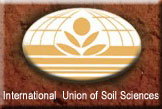 |
18th World Congress of Soil Science
July 9-15, 2006 - Philadelphia, Pennsylvania, USA |
 |
Arsenic can be methylated and transformed to volatile arsine compounds. These processes are important in understanding global arsenic cycling. Poultry production is a major agricultural enterprise in Delaware and the Delmarva Peninsula. The organic arsenic compound, roxarsone (3-nitro-4-hydroxyphenylarsonic acid), is fed to poultry to control diseases and to promote growth. The excreted waste, as poultry litter, which can contain 1-39 mg kg-1 total arsenic, is then often applied to the land as a fertilizer material. The fate of arsenic in the poultry litter is not fully understood. Even though substantial inputs of arsenic containing poultry litter are being applied to the soils on the Delmarva Peninsula, preliminary data do not indicate an accumulation of arsenic in the litter amended soils, with the total arsenic concentration being low, ranging from 2-8 mg kg-1. One possible reason for the lack of arsenic accumulation in the soils could be that the arsenic in the poultry litter is volatilizing in the poultry houses before the application or in the soils after the application. The arsenic could be transformed to methylarsines, which are toxic and can cause serious health issues. This study will report on investigations on the degree of volatilization in poultry litter and litter amended soil under various environmental conditions, such as moisture content and arsenic concentrations.



